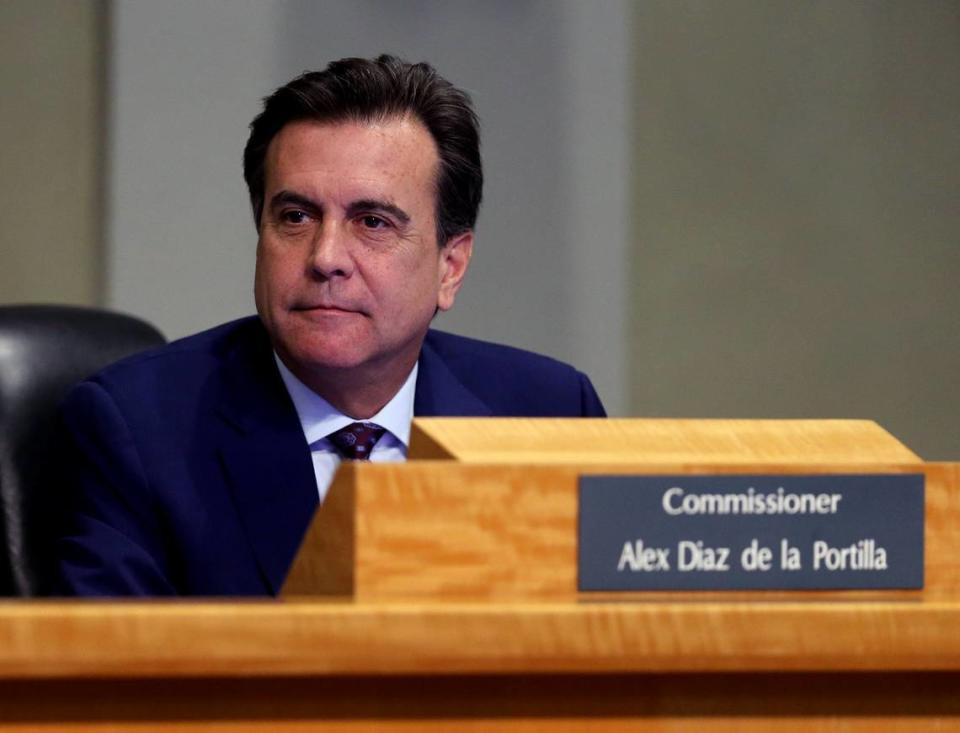No more commission districts? Miami weighs options as it awaits gerrymandering ruling
- Oops!Something went wrong.Please try again later.
Miami’s city government could consider eliminating commission district boundaries and radically changing the way voters elect their representatives in City Hall.
Any changes could impact the November election, where voters will elect three commissioners to represent neighborhoods including Allapattah, Flagami, Coconut Grove, Brickell and downtown.
On Thursday, commissioners asked their consultant to draw alternative voting maps in case a federal judge blocks a redistricting plan approved in 2022 — a plan that has come under fire after a coalition of community group sued and accused the city of racial gerrymandering.
The organizations, represented by attorneys from the American Civil Liberties Union, scored a preliminary legal victory May 3 when U.S. Magistrate Judge Lauren F. Louis recommended the city go back the drawing board. A federal judge is expected to hear from both sides before making a final ruling.
On Thursday, Commissioner Alex Díaz de la Portilla sparked the conversation when he asked administrators to explore returning the city to “at-large” districts, where voters across the city would elect all five commissioners, instead of voters only electing commissioners inside their district boundaries.
“Once we eliminate single-member districts, then all of Miami is Miami,” he said. “It’s a city, and everybody can vote, and pick their commissioner, group one, two, three, four and five, and then there’s no debate about where the lines are drawn.”

The current system has been in place since voters passed a referendum in 1997 creating districts after a citywide election the previous years left the city without a Black elected official. This led to the creation of three districts drawn with boundaries that favored Hispanics, one to favor white non-Hispanics and another to favor Blacks.
ACLU lawyers have taken aim at the system, arguing that just because it’s been in place for more than two decades, that doesn’t mean the map is constitutional. In her report, Louis said while the commission’s goal of maintaining “diversity of representation” on the commission could be good for the city, commissioners’ own statements during public meetings “expressly show that they viewed means of achieving that goal through mechanical racial quotas.”
Read more: Miami should redraw commission districts over racial redistricting plan, magistrate says
Díaz de la Portilla took a shot at Louis on Thursday, saying she “probably knows nothing about our city,” and he said commissioners should draw a new map or make districts at-large.
“Let’s be honest. We’ll probably elect five Hispanic commissioners, and if people think that’s good for the city of MIami, so be it,” he said. “Who’s going to argue that? Because the people decided.”
Commissioner Manolo Reyes echoed Díaz de la Portilla, saying the city could wind up with no Black or non-Hispanic white commissioners under a new plan.
“Be careful what you wish for,” Reyes said. “Since day one, when the boundaries were drawn, it was to assure diversity in the city of Miami. And the only way that we can assure diversity in the city of Miami is by — I’m going to call a spade a spade — gerrymandering.”
Commission Chairwoman Christine King said the discussion was premature and the city’s legal team has a path forward. Díaz de la Portilla disagreed, saying the commission needs to drive the policy-making and should proactively come up with alternatives.
Reyes and Díaz de la Portilla combined their ideas to ask administrators to explore the idea of at-large districts and ask the city’s redistricting consultant, former state lawmaker and lobbyist Miguel De Grandy, to meet with commissioners and develop alternative maps that would maintain the five-district formula.
City Attorney Victoria Méndez said the city has until Saturday to file objections to Louis’ report, and then the community groups have until May 19 to respond to the city’s objections, before U.S. District Judge K. Michael Moore makes the final decision.

